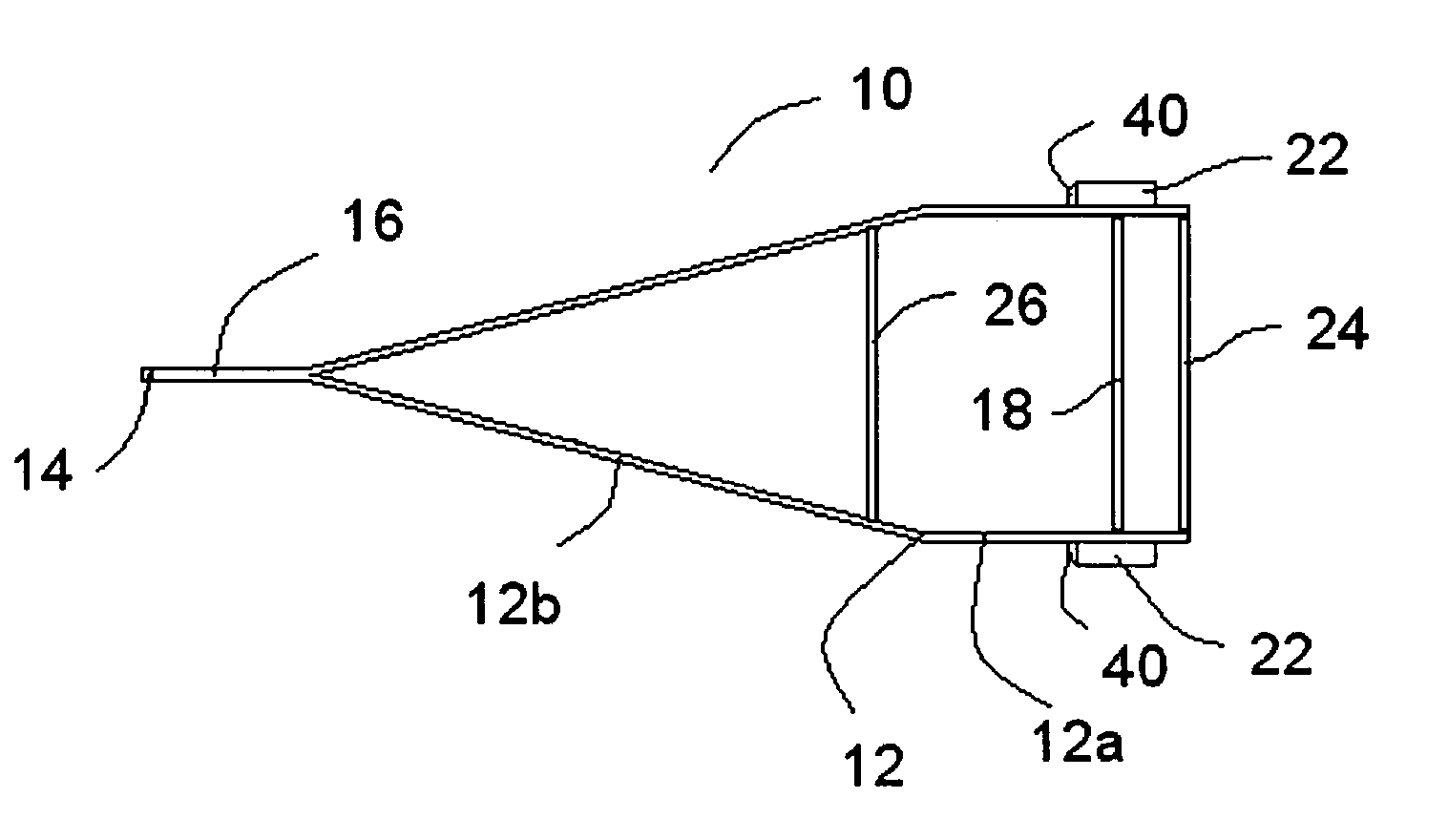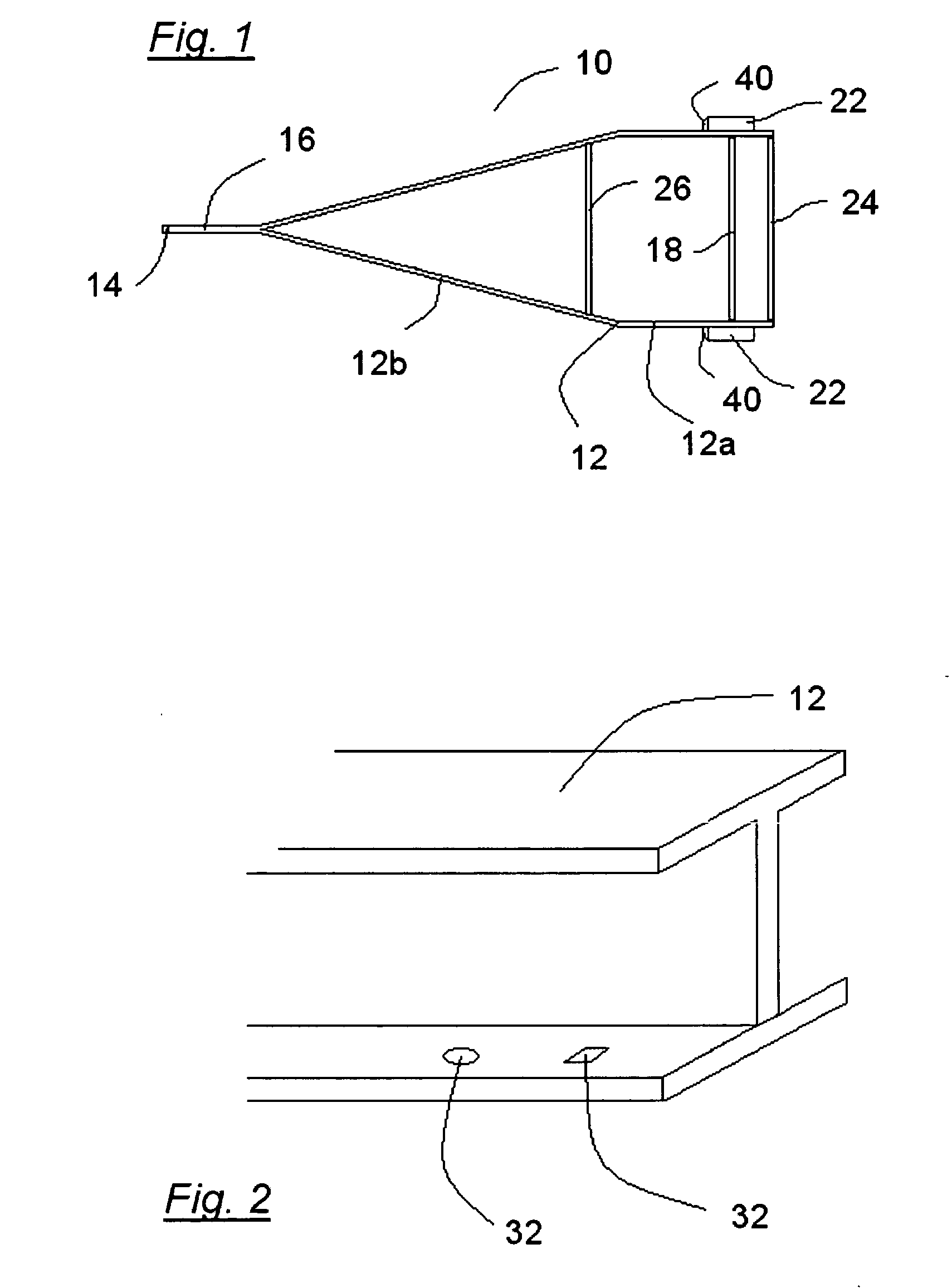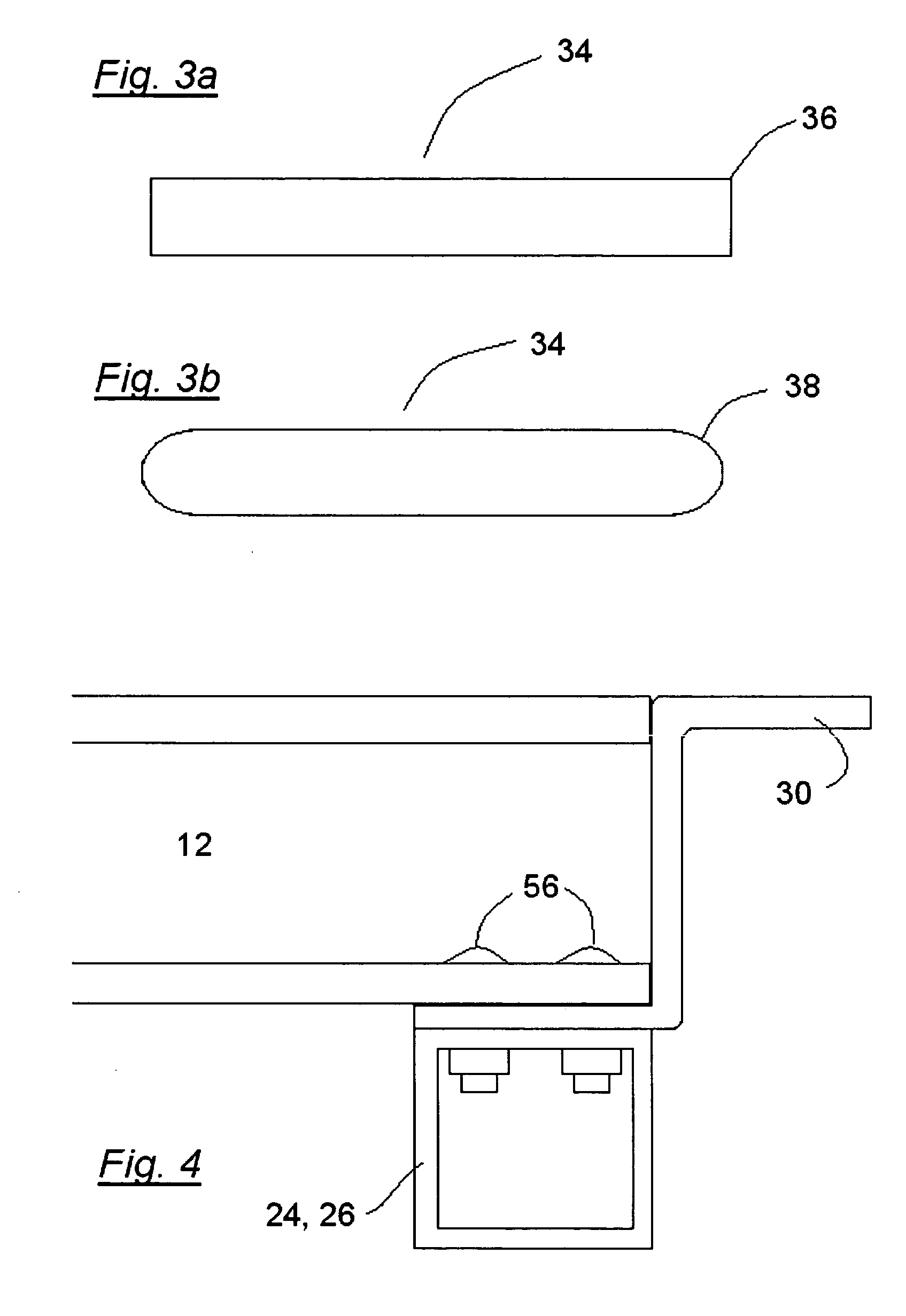Boat trailer
a boat trailer and trailer technology, applied in the field of trailers, can solve the problems of ineffective tightening of the nuts and the inventor's technical difficulties, and achieve the effects of increasing the safety of the trailer, reducing the inventory, and little or no cos
- Summary
- Abstract
- Description
- Claims
- Application Information
AI Technical Summary
Benefits of technology
Problems solved by technology
Method used
Image
Examples
Embodiment Construction
[0032] Referring now to the drawings, various arrangements are illustrated for utilizing the present invention on a boat trailer. However, it is understood that the use of the invention on a boat trailer is a preferred embodiment, for purposes of illustration. The use of the present invention is not intended to be limited to boat trailers. As is known to those skilled in the art and as is depicted in FIG. 1, trailers 10 include a pair of side frame members, or side beams, 12 which have a spaced parallel load-supporting portion 12a, upon which an object is carried, and a forward converging or tongue-forming portion 12b, through which the trailer is connected to a towing vehicle by means of a trailer hitch coupling 14. In a preferred embodiment, the side beams 12 are I-beams and may be formed by aluminum or other suitable materials.
[0033] The trailer 10 also includes an axle 18 and springs (not shown) that may be longitudinally adjustable relative to the side beams 12. Rubber-tired w...
PUM
 Login to View More
Login to View More Abstract
Description
Claims
Application Information
 Login to View More
Login to View More - R&D
- Intellectual Property
- Life Sciences
- Materials
- Tech Scout
- Unparalleled Data Quality
- Higher Quality Content
- 60% Fewer Hallucinations
Browse by: Latest US Patents, China's latest patents, Technical Efficacy Thesaurus, Application Domain, Technology Topic, Popular Technical Reports.
© 2025 PatSnap. All rights reserved.Legal|Privacy policy|Modern Slavery Act Transparency Statement|Sitemap|About US| Contact US: help@patsnap.com



